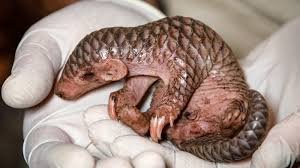
ugly fishes
While many people are drawn to the more beautiful and colorful fish in the ocean, there is a unique charm to those species often labeled as “ugly fishes.” These fish may not win any beauty contests, but they offer an incredible glimpse into the diverse world of marine life. From deep-sea dwellers to unusual features, these fish show that beauty isn’t always on the surface. In this article, we’ll explore the fascinating world of these “ugly fishes”, their unique features, and their role in the marine ecosystem.
What Makes Fish “Ugly”?
The term “ugly” is, of course, subjective. While some people may find certain fish unsettling, their appearance often reflects their adaptation to specific environments. Many so-called “ugly fishes” have evolved to survive in deep, dark parts of the ocean where their physical features help them thrive. These adaptations may include unusual body shapes, skin textures, or facial features.
Why Are These Fishes So “Ugly”?
- Survival Adaptations: Many ugly fish have evolved unusual traits to help them survive in extreme conditions, such as low-light environments or deep-sea pressures. For example, fish with large mouths or exaggerated fins may use them for hunting or navigating in their dark, deep-sea habitats.
- Predator Avoidance: Some fish adopt physical characteristics like disguised body shapes or camouflage to protect themselves from predators. What might seem ugly to us is actually a clever adaptation to survive in the wild.
- Symmetry and Function Over Beauty: Nature often prioritizes function over aesthetics. In the case of these fish, their odd features often serve important survival roles, such as hunting, attracting mates, or protecting them from danger.
Ugly Fish Species You Should Know About
Despite their less-than-perfect looks, these fish are incredible in their own right. Here are some of the most notable ugly fishes that have captured the curiosity of marine biologists and aquarists alike:
1. Blobfish (Psychrolutes marcidus) – The Poster Child for Ugly Fish
The blobfish is perhaps the most well-known of all the “ugly fishes.” Living at depths of around 2,000 to 3,900 feet below the ocean’s surface, this gelatinous fish has a blobby, droopy appearance. It looks as though it’s constantly sad, but this is simply due to its low-density flesh, which allows it to survive at extreme depths where the pressure is immense. To learn more about this unique fish, check out our full guide on Blobfish.
2. Anglerfish (Lophiiformes) – The Terrifying Deep-Sea Hunter
Anglerfish are known for their bioluminescent lure, a glowing appendage that they use to attract prey in the deep, dark ocean. With their sharp, fang-like teeth and often grotesque appearance, they are certainly not the most attractive fish in the sea. However, their survival tactics and hunting methods are nothing short of fascinating. Explore more about the Anglerfish in our Anglerfish care guide.
3. Goblin Shark (Mitsukurina owstoni) – The Alien Shark
The goblin shark is often referred to as a “living fossil” due to its strange, long, flat snout and the way it resembles a creature from science fiction. This shark has a highly unusual extendable jaw that it uses to grab prey. Although it’s not considered a threat to humans, its eerie appearance has earned it the title of one of the ugliest sharks in the world. To discover more, read our full guide on Goblin Sharks.
4. Ratfish (Chimaera monstrosa) – The Elusive Deep-Sea Creature
Ratfish, also known as ghost sharks, are part of an ancient group of fish known as Chimaeras. With their smooth, rat-like tails and large, bulbous heads, they often leave people puzzled. Though these fish are not aggressive, their appearance is often considered off-putting due to their unusual head structure and big, eerie eyes. Learn more about the Ratfish in our detailed article.
5. Vampire Squid (Vampyroteuthis infernalis) – The “Living Dead” of the Ocean
The vampire squid is a creature that lives in the oxygen-deprived waters of the deep sea. Despite its name, it doesn’t suck blood like a traditional vampire. It has red eyes, a cloak-like membrane, and can turn its body completely black, creating an ominous appearance. The vampire squid uses its bioluminescence to blend into the darkness of the deep ocean. To learn more, visit our full guide on the Vampire Squid.
6. Parrotfish (Scarus) – The Oddly Shaped Swimmer
Parrotfish may seem cute at first glance, but their bulbous snout and brightly colored scales often make them appear odd compared to other fish species. Known for their beak-like teeth that they use to scrape algae off coral reefs, these fish play a crucial role in the ecosystem by helping to maintain coral health. Discover more about these unique fish in our Parrotfish guide.
How These Ugly Fishes Contribute to the Marine Ecosystem
Despite their offbeat appearances, many of these ugly fishes play vital roles in their ecosystems. From keeping the balance of deep-sea food chains to cleaning coral reefs, these fish contribute to the health of the oceans in ways that are often invisible to the human eye. To better understand how each fish impacts its environment, read our ecosystem contribution guide.
1. Predator Control
Many of these fish, such as the Anglerfish and Goblin Shark, help keep the populations of smaller fish in check. By acting as apex predators, they prevent overpopulation and maintain the natural balance in the food chain.
2. Cleaning and Algae Control
Fish like the Parrotfish help keep coral reefs healthy by eating algae that would otherwise overtake coral. Their eating habits contribute to a balanced reef ecosystem, where coral can thrive.
3. Deep-Sea Ecology
Creatures like the blobfish and ratfish are adapted to deep-sea environments where light barely penetrates. These fish are important in nutrient recycling and support deep-sea biodiversity by feeding on different marine organisms and decomposing matter.
Why Should We Appreciate Ugly Fishes?
While ugly fishes might not win any beauty contests, their strange features and unique adaptations are truly remarkable. In nature, function often trumps form, and these creatures serve vital roles in maintaining the balance of the marine ecosystem. If we look past their appearance and focus on their fascinating abilities, we can appreciate them for the amazing creatures they are.
The Importance of Conservation
As with all marine species, ugly fish are vulnerable to overfishing, habitat destruction, and climate change. It’s crucial that we continue to protect and preserve these creatures to maintain the health of our oceans. If you’re interested in learning more about how you can help protect the ocean’s biodiversity, check out our marine conservation guide.
Conclusion: Embrace the Beauty in the Ugly
While the term “ugly fish” might be used to describe these fascinating creatures, they are beautiful in their own way. Their unique features, roles in the ecosystem, and survival strategies are a testament to nature’s ability to adapt. So, the next time you encounter one of these unusual fish, remember that their appearance is just part of what makes them extraordinary.
Explore the world of ugly fishes, and you’ll begin to see them not just for their looks, but for the incredible creatures they truly are. Let us learn to appreciate all forms of life—ugly or not—because every fish, no matter how it looks, plays an essential part in the intricate web of ocean life.






